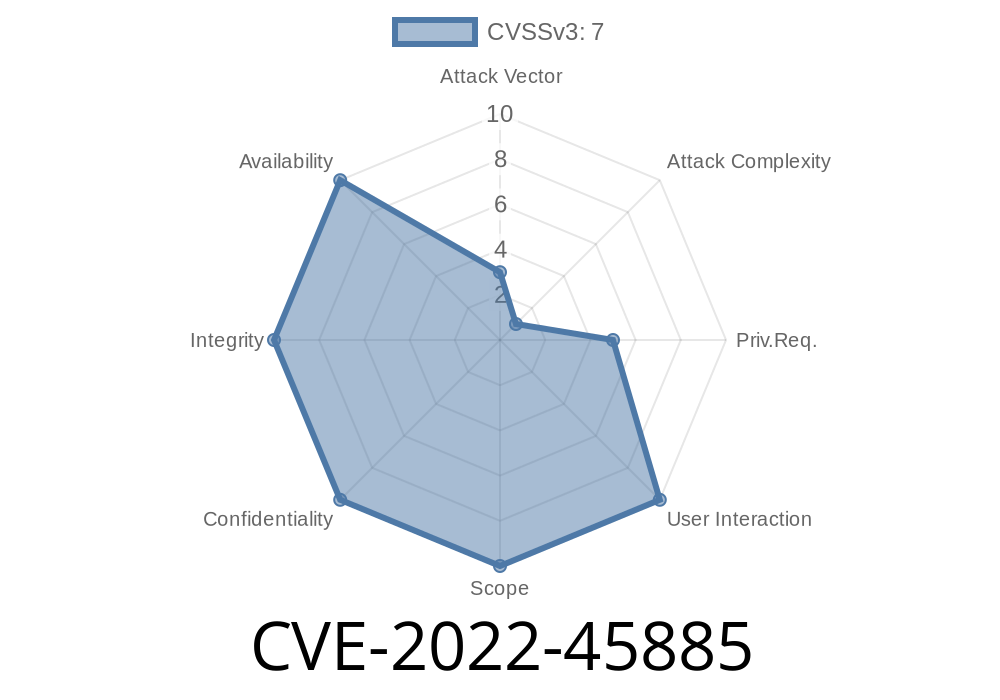A critical issue with a Common Vulnerabilities and Exposures identifier CVE-2022-45885 has been recently discovered in the Linux kernel up to and including version 6..9. The vulnerability lies in the file drivers/media/dvb-core/dvb_frontend.c, where it leads to a race condition that can result in a use-after-free vulnerability when a device is disconnected. This long-read post aims to give a comprehensive view of the vulnerability, discussing the code snippets involved, referencing the relevant documentation, and outlining the details of the potential exploit.
Exploit Details
The use-after-free vulnerability occurs when an attacker manages to utilize memory that was previously allocated for a specific task but is now freed for a new task. The Linux kernel, being the core of the operating system managing memory allocation, can inadvertently create a serious security risk if exploited successfully.
In the context of the mentioned vulnerability, the race condition in drivers/media/dvb-core/dvb_frontend.c can allow an attacker with local access to the vulnerable system to cause a denial of service (crashing the system) or privilege escalation (gaining unauthorized control).
Code Snippet
For a better understanding, let's consider the vulnerable part of drivers/media/dvb-core/dvb_frontend.c file:
static int dvb_frontend_get_event(struct dvb_frontend_private *fepriv, unsigned int *events)
{
int num_events = ;
int ret;
while (1) {
unsigned long flags;
spin_lock_irqsave(&fepriv->events_sem, flags);
if (fepriv->state & FESTATE_SHUTDOWN) {
ret = -ETIMEDOUT;
} else {
ret = get_event(fepriv, events + num_events);
if (ret == -EOVERFLOW)
num_events++;
}
spin_unlock_irqrestore(&fepriv->events_sem, flags);
if (ret != )
break;
}
return ret;
}
In this code, the critical resource protected with locks is the fepriv->state. The problematic part lies in the manipulation of the resources protected under the spinlock. A race condition can be triggered when the FESTATE_SHUTDOWN flag is set during the spinlock interruption, leading to a use-after-free scenario when the device is disconnected.
Link to original references
- CVE-2022-45885 - NVD
- Linux kernel vulnerability info
- Linux Kernel Mailing List patch submission
Mitigation
The vulnerability can be mitigated by applying the patch provided by the Linux kernel maintainers. Essentially, the patch ensures the device reference is securely managed by keeping a reference to the device until it is not in use by frontend thread.
Here is the patch applied to drivers/media/dvb-core/dvb_frontend.c
--- a/drivers/media/dvb-core/dvb_frontend.c
+++ b/drivers/media/dvb-core/dvb_frontend.c
@@ @@
static void dtv_frontend_detach(struct dvb_frontend *fe, struct dvb_frontend_private *fepriv)
{
+ unsigned long flags;
fepriv->state |= FESTATE_SHUTDOWN;
+
+ spin_lock_irqsave(&fepriv->events_sem, flags);
wake_up_interruptible(&fepriv->wait_queue);
+ spin_unlock_irqrestore(&fepriv->events_sem, flags);
if (fepriv->thread)
kthread_stop(fepriv->thread);
As seen above, the patch adds a spin_lock_irqsave() and spin_unlock_irqrestore() pair around the wake_up_interruptible() call, preventing potential race conditions from happening.
Conclusion
It is essential for system administrators and developers to ensure that their Linux kernel is updated to at least version 6..9 with the patch applied to prevent the CVE-2022-45885 vulnerability. This can protect their systems from malicious attackers exploiting the use-after-free scenario, maintaining the security and stability of their environments.
Timeline
Published on: 11/25/2022 04:15:00 UTC
Last modified on: 01/20/2023 20:19:00 UTC
